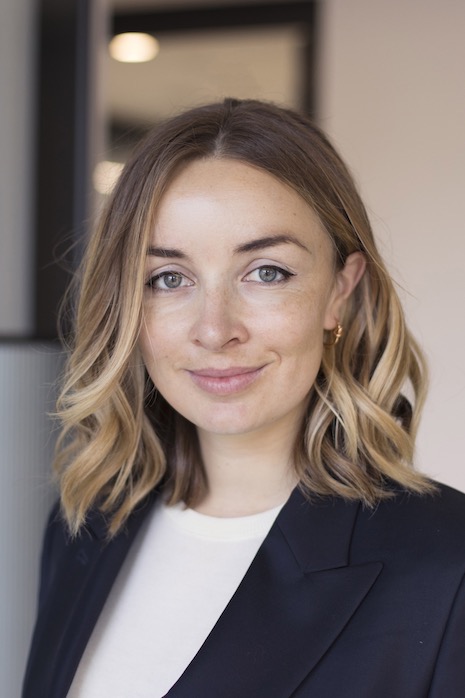 This year's event, focused on navigating the new normal, will be digital, while the 2022 edition will be held in-person in Athens. Image courtesy of the Financial Times
This year's event, focused on navigating the new normal, will be digital, while the 2022 edition will be held in-person in Athens. Image courtesy of the Financial Times
The luxury goods sector has proven remarkably resilient throughout the COVID-19 crisis, with analysts forecasting a near-full return to 2019 revenues this year as share prices continue to outperform the wider equity market.
Yet the crisis has changed the relationship between luxury brands and their customers in profound ways. Navigating the world of business in an uncertain and highly volatile world is tough.
“The major luxury brands were particularly resilient during the crisis and many managed to grow market share,” said Lauren Indvik, fashion editor of the Financial Times, host of the FT Business of Luxury summit.
“For the independents and brands in the midst of turnarounds, it has been much more challenging,” she said.
The May 19-20 digital summit will boast speakers from Boucheron, Louis Vuitton, Tod’s, Victoria Beckham, Moncler, Valentino, OTB, Gabriela Hearst, Chloé, Roland Mouret, Snap and Sotheby’s, among others.
In this Q&A, Ms. Indvik shares the FT Business of Luxury 2021’s focus, how the fashion business is evolving and what comes next for luxury. Please read on:
This year's theme, "Navigating the New Normal," assumes that the luxury business is making a break from the past. Is it that obvious, or will old habits spring back?
I think we will see a return to fashion shows and live experiences – “experiential luxury” if you will – but in other ways luxury looks quite different to its pre-pandemic self.
The events of the past year have accelerated the need for greater racial diversity, inclusion, promotion and support within organizations, and for materials and processes that are less hazardous to the environment and workers.
We've also seen mainland China double its share of the luxury goods market over the past year – that will have a big knock-on effect on retail, product, marketing.
While the pandemic was in full throttle in Europe and the United States, luxury brands and retailers made several vows to be more caring of the environment with sustainability pledges and curbing their carbon footprint, respectful of diversity, and carrying few collections. Will they remember when the times improve?
The bigger luxury players have published targets around reducing greenhouse gas emissions, water consumption, etc., and are reporting their progress against those targets annually.
I think journalists and third-party watchdogs – i.e. New Standards Institute, Good On You – are getting better about holding brands accountable to those targets. So no, I don't think they will forget.
That said, the industry is a long ways away from decoupling sales and profit growth from product volume. So, as demand resumes, yes, I think we can expect product volume to increase also.
 Lauren Indvik is fashion editor of the Financial Times
Lauren Indvik is fashion editor of the Financial Times
What is the state of luxury fashion? What will it look like in the second half of the year?
The forecasts are very positive. Analysts are expecting a near full-return to pre-pandemic – i.e. 2019 – sales levels by the end of this year, after seeing sales drop by about 16-20 per cent last year. Of course, those numbers only tell part of the story.
The major luxury brands were particularly resilient during the crisis and many managed to grow market share.
For the independents and brands in the midst of turnarounds, it has been much more challenging.
How did you pick the topics for this year's event? What is the common thread?
Dealmaking is back on the agenda in a big way, and we are delighted to have Moncler's Remo Ruffini and OTB's Renzo Rosso with us to talk about their recent acquisitions of Stone Island and Jil Sander, respectively, and what they are eyeing next.
Also, Tod's chairman, Diego Della Valle, will be with us to talk about his recent deal with LVMH and his plans for Tod's.
China and what post-‘90s Chinese consumers want from luxury brands is a big focus, as is sustainability.
We'll be talking through key priorities for 2030 and looking at how mature companies can transition to circular business models, or at least integrate some of those elements of circularity.
I'm particularly excited for U.S. financial editor Robert Armstrong's panel on the future of workwear – a subject I have been thinking about quite a bit.
This is the second digital Business of Luxury. What did you learn from last year's experience and what changes did you institute this time round?
The best part about hosting it online is that we were able to welcome so many more guests and speakers from around the globe.
We also had more quantitative data which informed this year's agenda.
Are you angling for an in-person event next year?
Yes, we are planning to host the next summit in Athens in 2022.
What is your goal with this event in terms of audience and messaging takeaways?
I want the audience to leave with a very clear picture of where luxury is headed this year and in the next decade to come. And that they will be inspired to do things a bit differently because of what they learned at the summit.
